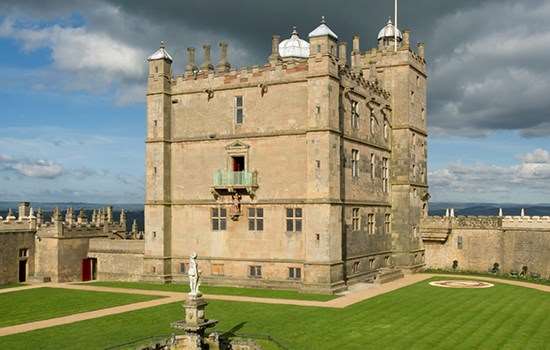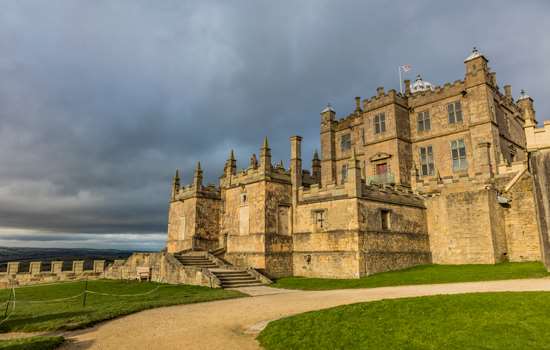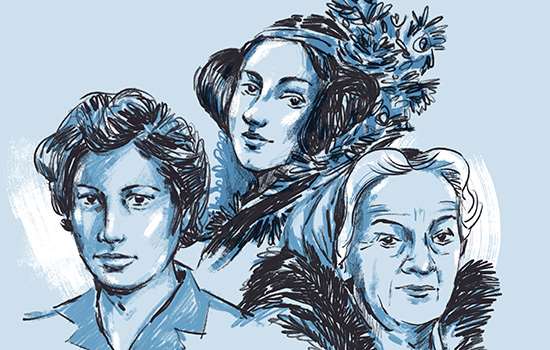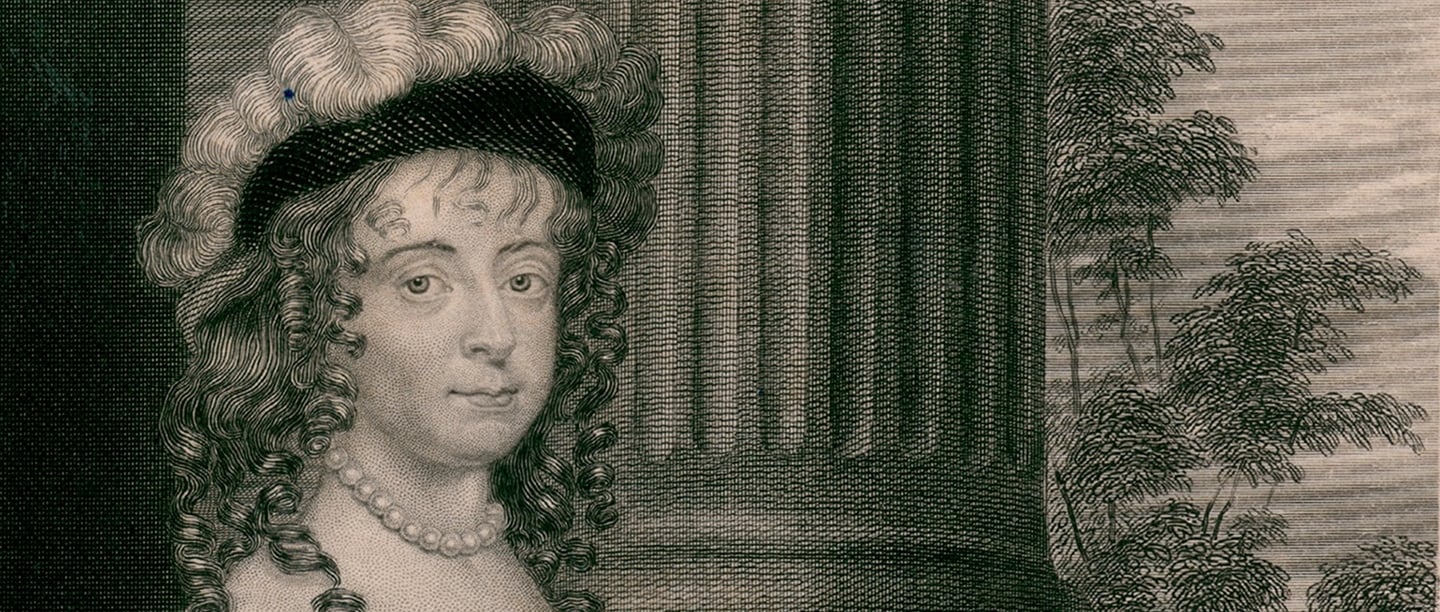Civil war
Margaret Cavendish (neé Lucas) was born near Colchester in 1623, the daughter of wealthy parents. Her education as a child was basic – like many women of her day, she was taught to read and write, and studied music, needlework and dancing.
In 1643, at the age of 20, she went to Oxford, to seek a position in the household of Queen Henrietta Maria, wife of Charles I. This was where the king had established his headquarters after the outbreak of the English Civil War the year before. Margaret became a maid of honour to the queen. In spite of having begged her mother to go to Court, her shy and bashful nature meant this was a position she did not enjoy.
In 1644 she travelled with the queen to Paris to escape the war. There Margaret met the Royalist commander William Cavendish, Marquess of Newcastle, who had suffered a catastrophic defeat at the Battle of Marston Moor. Although there was a 30-year age gap between them, a courtship soon developed. Despite disapproval from the queen and their friends, they were married in 1645. Newcastle’s estates – which were sequestered (confiscated) by Parliament during the Civil War – included his main seat, Welbeck Abbey in Nottinghamshire, and nearby Bolsover Castle, Derbyshire.
A prolific writer
In 1651 Margaret and her brother-in-law, Charles, temporarily returned to England, where she attempted to gain an income from her husband’s estate. But her appeal to the republican Cromwellian regime was unsuccessful. Her husband was viewed as ‘the greatest traitor to the state’, and her Royalist brother had been executed in 1648.
While awaiting the outcome of her appeal, Margaret published her first book, Poems and Fancies, in 1653. She had always been inclined to ‘contemplation rather than conversation’ and ‘to write with the pen than to work with a needle’. In the intellectual circles that coalesced around her husband and brother-in-law while in exile, she was able to explore her interests and ideas, or ‘fancies’. In Poems and Fancies, she started to develop her interest in natural philosophy, or what might be considered science today. This included descriptions of her theory of atoms (the view that the world is made up of atoms), told through verse. She also included a poem, ‘A Dialogue between a Bountiful Knight and a Castle ruin’d in War’, describing the damage caused to her husband’s home, Bolsover Castle, when it was captured by Parliamentarian troops.
Margaret rejoined her husband overseas after 18 months in England, and continued to write prolifically throughout the 1650s. She began to discuss issues of sex and gender, exploring the topics of marriage, courtship and infidelity. She also examined whether gender inequality was caused by an imbalance between the sexes or a lack of opportunity for women.
‘Mad Madge’
In her autobiography, written while in exile, aged 33, Margaret wrote: ‘I did dislike any should follow my fashions, for I always took delight in a singularity, even in accoutrements of habits’. She went on to describe her interest in clothing and inventing her own fashions from a young age. Although – by her own admission – she was shy, Margaret was fascinated by the image she presented to the world and took pride in being unique, as well as in her creativity and imagination.
Her fascination with fashion and originality extended into her adult life (and her written works). She was noted for drawing crowds with her extravagant gowns and played with gendered conventions – on one occasion wearing a justaucorps, a coat more commonly worn by men. A poem, attributed to John Evelyn, described her appearance as ‘like a Cavalier, But that she had no beard’.
Margaret’s unusual attire and manners, unconventional interests, and publications attracted comment. The diarist Samuel Pepys described her as ‘mad, conceited and ridiculous’, while the exiled court of Henrietta Maria saw her as little more than a simpleton due to her bashful and quiet nature. On the publication of Poems and Fancies, one contemporary exclaimed: ‘she could never bee soe rediculouse else as to venture at writeing book’s and in verse to’ and that her book was ‘ten times more Extravagant than her dresse’.
Later writers would refer to her as ‘Mad Madge’, although this nickname was probably not used in Margaret’s lifetime. It is clear, however, that Margaret was an intelligent and ambitious woman who, in pushing boundaries and in her constant endeavour to be ‘singular’, inevitably attracted some censure.
Writings on natural philosophy
After the Restoration of the monarchy in 1660 the Cavendishes returned from exile. William began to restore his estates, including Bolsover Castle, and Margaret was actively involved in running his lands.
During the 1660s she explored new ideas and developed her theories on natural philosophy. One of her key works from this time – Observations upon Experimental Philosophy (1666) – offered an extended critique of one of the most important scientific and philosophical movements of the early modern period. Associated with the newly formed Royal Society, experimental philosophy (the precursor to empirical science) sought to promote experiment and careful observation over speculative theorising. Margaret, however, argued that the artificial instruments used by experimental philosophers like Robert Boyle and Robert Hooke ‘delude’ us. We can gain a better understanding of the natural world, she suggested, by using our natural senses combined with reason.
She also countered the increasingly popular view of nature as purely mechanical, like a large clock. In her view, the entire natural world – including animals and the ‘natural souls’ of people, but also vegetables and minerals – is self-moving, and has some degree of perception and knowledge.
The Blazing World
But Margaret was aware that her arguments were only accessible to those already fluent in philosophical discourse – by and large, well-educated men. To address this, she published an appendix to her Observations that continued her philosophical arguments in a new form – a short work of fiction she called The Blazing World.
The Blazing World is an inventive, genre-defying book: a work of utopian fiction, an early example of science fiction, a proto-feminist manifesto, and a piece of popular philosophy. One of Margaret’s aims was to find a form that would promote an interest in philosophy and science among women.
The book tells the story of a young lady who is abducted and then shipwrecked in a strange new world, which can only be entered via the North Pole. The lady marries the Emperor of the Blazing World. As Empress she is given the absolute power to govern the world, creating a peaceful and well-ordered society.
The world is populated by human-like creatures who each practise different intellectual disciplines: bird-men are astronomers, spider- and lice-men are mathematicians, and bear-men are experimental philosophers. The Empress calls on these creatures in turn to find out what they can tell her about the Blazing World, giving Margaret an opportunity to criticise their real-world counterparts – the experimental philosophers. The bear-men, for instance, displease the Empress by arguing among themselves over what their telescopes reveal, which the Empress takes as evidence that their telescopes are deluding their senses. She eventually returns to her native country to save it from invasion, and makes it sovereign over all the nations in our world.
The real-life Margaret makes an appearance in the book when her soul is transported to the Blazing World to act as a scribe for the Empress’s writings. Margaret becomes the Empress’s friend and adviser, and their souls take a visit to Bolsover Castle, where they see William Cavendish practising the arts of manège (horsemanship) and fencing.
As well as providing a vehicle for Margaret’s philosophical ideas, The Blazing World more generally offers reflections on relationships between men and women and the role of women in society. She went on to explore these themes again in her works, including her comic play The Convent of Pleasure (1668), which is set in a convent for unmarried women who are devoted to pleasure and nature.
Contemporary reception
Margaret was one of the most published women of the 17th century, writing plays, essays, criticisms, biography, and poetry, as well some of the earliest proto-science fiction. Unusually for the time, she did this under her own name. However, her attempts to engage her contemporaries in discussion were largely unsuccessful. There was no published contemporary response to her Observations, nor to her philosophical work more generally: the philosopher and theologian Henry More correctly predicted in a letter to another female philosopher, Anne Conway, that ‘she may be secure from any one giving her the trouble of a reply’.
In 1667 Margaret became the first woman to attend a meeting of the Royal Society – a bold step which was not repeated for centuries. The Society, founded in 1660 to bring together leading scientific minds of the day, held weekly meetings which included experiments performed by its members. After Margaret requested a visit, a vote was taken by the Society’s exclusively male membership who, after much debate, agreed she could attend. There she was able to witness the experiments of her fellow natural philosophers first-hand. But her presence largely attracted comments only on her dress and behaviour. Pepys, a member of the Society, wrote of her visit that:
The Duchesse hath been a good, comely woman; but her dress so antick, and her deportment so ordinary, that I do not like her at all, nor did I hear her say any thing that was worth hearing.
Although Margaret may not have expressed them on the day, she certainly had views on the methods of the Society and the specifics of their work, which she articulated in her publications.
Legacy
Throughout her life, Margaret sought to establish a reputation as a credible writer and was preoccupied with fame and being remembered. She wrote of her hope that she would be remembered for her ‘worth and merit’, ‘wit’ and ‘wise actions’, as well as her works – ‘the labour of my brain’. Yet criticism and writing surrounding her life often focused on her eccentric personality more than her work: there was little contemporary understanding of her achievements.
Margaret is perhaps only recently coming to receive the recognition she longed for and deserved, as researchers have begun to show an increased interest in both her literary works and her philosophical thought in the context of the time and wider philosophical debates. Many of her books are in print today, perhaps justifying her prophetic statement in Playes Never Before Printed (1668): ‘I regard not so much the present as future Ages, for which I intend all my Books.’
By Megan Leyland, Senior Properties Historian at English Heritage, and Professor Keith Allen, Department of Philosophy, University of York
Further reading
Keith Allen et al, The Blazing World of Margaret Cavendish (University of York Department of Philosophy, 2023) [pdf download, 1.5MB]
Margaret Cavendish, The Blazing World and Other Writings, ed Kate Lilley (London, 1992)
Margaret Cavendish, Observations upon Experimental Philosophy, ed Eileen O’Neill (Cambridge, 2001)
David Cunning (ed), Margaret Cavendish: Essential Writings (New York, 2019)
David Cunning, ‘Margaret Lucas Cavendish’, The Stanford Encyclopedia of Philosophy, eds Edward N Zalta and Uri Nodelman (winter 2022 edn)
Anne Shaver (ed), The Convent of Pleasure and other Plays (London, 1999)
E Mariah Spencer, ‘A Duchess “given to contemplation”: the education of Margaret Cavendish’, History of Education Quarterly 61:2 (May 2021), 213−39
Lisa Walters and Brandie R Siegfried (eds), Margaret Cavendish: An Interdisciplinary Perspective (Cambridge, 2022)
Katie Whitaker, Mad Madge: Margaret Cavendish, Duchess of Newcastle, Royalist, Writer and Romantic (London, 2003)
Emma Wilkins, ‘Margaret Cavendish and the Royal Society’, Notes and Records: The Royal Society Journal of the History of Science 68 (2014), 245−60
Online editions
Many of Margaret Cavendish’s works can be read free online through the Digital Cavendish project or the Internet Archive For a digital critical edition of Poems and Fancies see Margaret Cavendish’s Poems and Fancies.
Find out more
-

Bolsover Castle’s Philosopher Duchess
In this episode of our Speaking with Shadows podcast, Josie Long visits Bolsover Castle to discover the life and writings of Margaret Cavendish.
-

Visit Bolsover Castle
Discover Bolsover Castle, a spectacular mansion overlooking the Derbyshire countryside, built by William Cavendish in the early 17th century for pleasure and entertainment.
-

History of Bolsover Castle
Perched on a ridge high above the Vale of Scarsdale on the site of a medieval fortress, Bolsover Castle is an extraordinary 17th-century aristocratic retreat.
-

Women in history
Read about the remarkable lives of some of the women who have left their mark on society and shaped our way of life – from Anglo-Saxon times to the 20th century.
